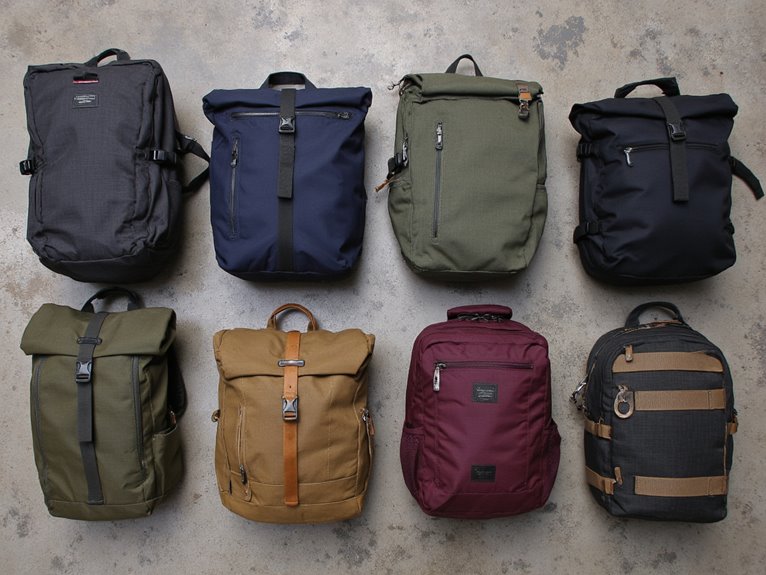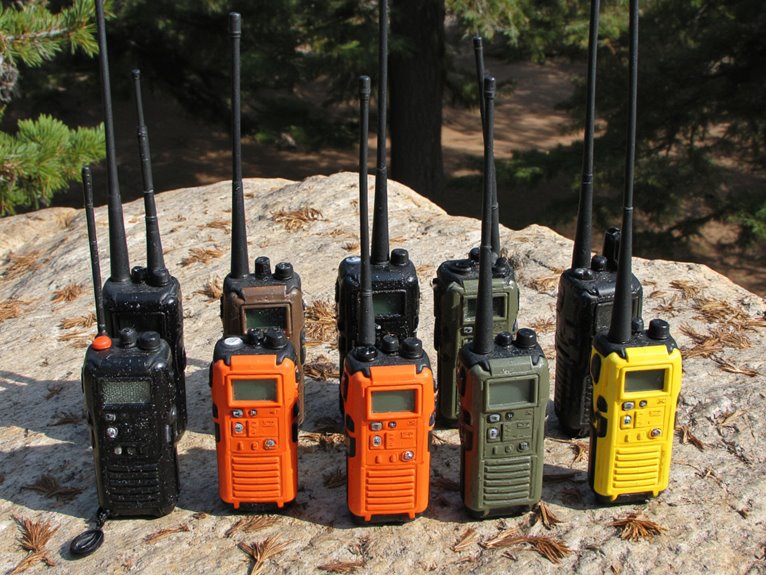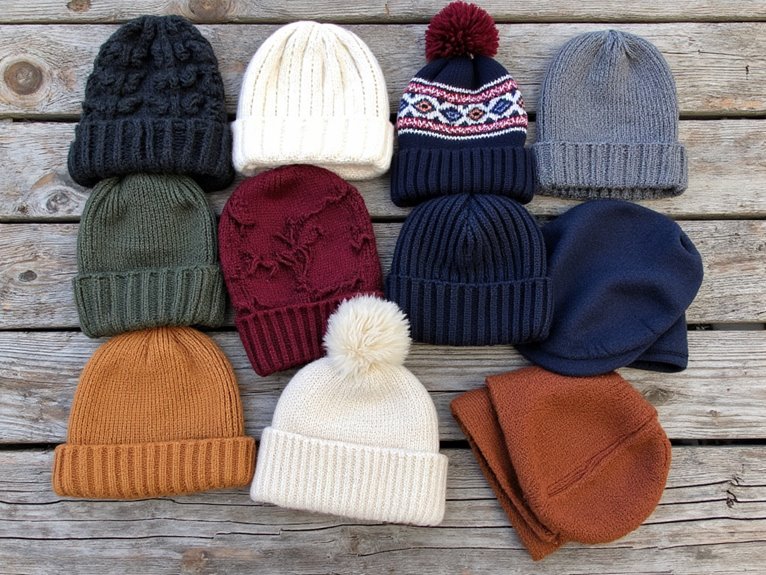Why Not Hike in Leggings?
Leggings, despite their comfort and style, are fundamentally unsuited for hiking due to their design and functionality limitations, lack of protection and support, discomfort, and risk of injury and illness. They lack essential features like moisture-wicking properties, breathability, and abrasion resistance, making them vulnerable to the rigors of outdoor activities. Additionally, they offer little to no protection against wind, rain, or extreme temperatures, and leave ankles vulnerable to twists and sprains. As you venture into the world of hiking, it's essential to prioritize function over fashion and choose gear that truly supports your adventure, and discover why else leggings fall short.
We are supported by our audience. When you purchase through links on our site, we may earn an affiliate commission, at no extra cost for you. Learn more. Last update on 7th January 2026 / Images from Amazon Product Advertising API.
Lack of Ankle Support Puts You at Risk
Wearing leggings while hiking can leave ankles vulnerable to twists and sprains due to the lack of structural support.
Unlike hiking boots or sturdy shoes, leggings provide no ankle stabilization, making it easier to roll or twist an ankle on uneven terrain.
This increased risk of ankle injury can be detrimental to a hiker's safety and overall experience.
In addition, a sprained ankle can be a serious setback, potentially requiring evacuation from the trail or even medical attention.
Prioritizing ankle support when hiking is vital to a safe and enjoyable experience.
Moisture-Wicking Abilities Are Overrated
While ankle support is a critical consideration for hikers, another often-touted benefit of leggings – their moisture-wicking abilities – may not be the game-changer that many make them out to be.
In reality, this feature is only beneficial in specific conditions, such as high-intensity activities or humid environments.
For most hiking trips, the moisture-wicking abilities of leggings are not a vital factor.
Additionally, many hikers wear base layers or mid-layers that already provide adequate moisture management.
Moreover, the added cost of moisture-wicking leggings may not be justified for casual hikers.
Limited Durability Means Frequent Replacements
Leggings' vulnerability to abrasion and tears means that hikers can expect a relatively short lifespan from their investment, leading to frequent replacements and added expense.
This limited durability is particularly problematic for hikers who prioritize reliability and cost-effectiveness in their gear.
The constant need for replacement can be frustrating and costly, especially for those who hike frequently.
In addition, the environmental impact of frequent replacements cannot be ignored, as it contributes to unnecessary waste and resource consumption.
Insufficient Protection From the Elements
One of the most critical concerns with hiking in leggings is their inability to provide adequate protection from the elements, leaving hikers vulnerable to harsh weather conditions.
Leggings offer little to no protection against wind, rain, or extreme temperatures, making them ill-suited for outdoor activities.
In cold weather, leggings can leave legs exposed to chilling winds, while in hot weather, they can trap heat and moisture, leading to discomfort and potential heat-related illnesses.
Additionally, leggings often lack breathable and water-resistant materials, making them prone to saturation in wet conditions.
This lack of protection can lead to discomfort, distraction, and even injury, making them a less-than-ideal choice for hikers.
In addition, leggings can become heavy when wet, further compromising their functionality.
Increased Risk of Insect Bites and Stings
When hiking in leggings, the skin exposure increases the risk of insect bites and stings.
The fabric of leggings offers no protection against insect bites, making hikers more vulnerable to itchy welts and potentially serious allergic reactions.
As a result, hikers in leggings are more susceptible to encounters with biting and stinging insects, which can quickly turn a pleasant hike into an uncomfortable and potentially hazardous experience.
Skin Exposure Increases Risk
Exposure of skin to the outdoors increases the risk of insect bites and stings, which can lead to discomfort, infection, and even disease transmission.
When skin is exposed, it becomes a target for insects, increasing the likelihood of bites and stings.
Mosquitoes, ticks, and other insects can transmit diseases such as Zika, Lyme disease, and West Nile virus.
Additionally, bites and stings can cause painful reactions, swelling, and itching.
By covering skin, hikers can reduce the risk of insect bites and stings, ensuring a safer and more enjoyable outdoor experience.
To minimize skin exposure, especially in areas where insect-borne diseases are prevalent, taking preventive measures is crucial.
Fabric Offers No Protection
Most hikers are unaware that the fabric of their leggings offers little to no protection against insect bites and stings, leaving them vulnerable to the risks associated with skin exposure.
The thin, stretchy material of leggings is no match for determined insects, and hikers may not even notice they've been bitten until it's too late.
Moreover, some insects like mosquitoes can bite through fabric, making leggings an ineffective barrier.
Without proper protection, hikers are at risk of contracting diseases like Zika, dengue fever, or chikungunya.
It's crucial to take additional precautions, such as applying insect repellent or wearing protective clothing, to minimize the risk of insect-borne illnesses.
Uncomfortable and Constricting Fabric
Many hikers who opt for leggings over traditional hiking pants often find themselves struggling with uncomfortable and constricting fabric that can hinder their performance and overall hiking experience.
The tight, synthetic materials used in leggings can cause chafing, sweating, and discomfort, making it difficult to focus on the hike.
In addition, the constricting nature of leggings can restrict movement, making it challenging to navigate uneven terrain or climb steep inclines.
Moreover, this discomfort can lead to fatigue, decreased mobility, and a less enjoyable hiking experience.
No Protection From Thorns and Brush
When venturing into dense vegetation, hikers who opt for leggings are more susceptible to scratches and punctures from thorns and sharp branches.
The thin, flexible material of leggings offers little resistance to the grasping tendrils of brush and brambles, leaving legs vulnerable to scratches and tears.
As a result, hikers may find themselves traversing thorny pathways with caution, lest they suffer the consequences of inadequate protection.
Thorny Pathways Ahead
Thorny vegetation and overgrown brush lining the trail pose a significant threat to hikers wearing leggings, as their legs are left exposed to the mercy of unforgiving thorns and abrasive plant material.
Without the protection of sturdy pants, hikers are more susceptible to scratches, cuts, and abrasions. This can not only be painful but also increase the risk of infection.
In addition, thorns and spines can easily puncture or snag on leggings, compromising their integrity. As a result, hikers may need to halt their journey to address these issues, wasting valuable time and energy.
It's essential for hikers to weigh the risks associated with wearing leggings on trails with dense vegetation.
Snagging and Tears
Snagging and tears are a constant threat to hikers wearing leggings, as the fragile fabric is no match for the unforgiving thorns and abrasive plant material that line the trail.
A moment's carelessness can result in a gaping hole or a network of runs, rendering the leggings useless for the remainder of the hike.
The delicate fabric of leggings provides no protection against the harsh natural environment, leaving hikers vulnerable to the whims of the wilderness.
Even minor encounters with thorny vegetation can lead to significant damage, making leggings a questionable choice for hiking attire.
It's essential to weigh the risks and consider more durable, trail-tested alternatives for a successful and comfortable hiking experience.
Not Designed for Outdoor Activities
Most leggings are not designed with outdoor activities in mind, and their fabric and construction reflect this.
They are typically made of thin, lightweight materials that prioritize comfort and style over durability and functionality.
This means they often lack features like moisture-wicking, breathability, and abrasion resistance, which are essential for outdoor activities like hiking.
Additionally, leggings are often designed for casual, everyday wear, not for withstanding the rigors of the great outdoors.
In addition, they may not be able to withstand the demands of hiking, such as rough terrain, inclement weather, and repeated wear and tear.




